Elementary rules of the road. Rules of the road - a code of laws for drivers
Rules of conduct for drivers.
In order to prevent traffic accidents The author of the article proposes the following norms of behavior for car drivers:
1. Drivers motor transport voluntarily, once a year (at least), repeat (study) the rules traffic. This must be done due to:
a) constant introduction of additions and changes to the Rules;
b) forgetting certain points of the Rules;
First of all, the need voluntary repetition of the Rules needed for drivers (owners) of individual vehicles. There is no other mechanism for them.
Hired drivers are required to complete a 20-hour program of Road Traffic Regulations annually. And the employer organizes this study in accordance with Article 20 of the Law on Road Safety and in accordance with the joint document of the Ministry of Transport of the Russian Federation and the Ministry of Education of the Russian Federation "Training and thematic plan and program of annual classes with drivers of motor transport organizations", which was put into effect from 01.01. 2002 (RD No. 26127100-1070-01.2.10.01).
2. Relate to the rules of the road Russian Federation with all responsibility and seriousness. The rules were written in 1940 and are constantly being changed, improved and supplemented, including on the basis of an analysis of traffic accidents. The document today is hard-won, competent, understandable, its content takes into account all aspects of road traffic. Compliance with the rules of the road by each driver will lead to a decrease in accidents on the roads. Failure to comply with the Rules leads to accidents and problems.
3. Before leaving the driver must rest. Inter-shift rest norms driver for hire are set out in the article "Work and rest of the driver" on this site.
4. The driver is prohibited drive a vehicle while intoxicated (alcoholic, narcotic or otherwise), under the influence of medicines, in a sick or tired state. After drinking even small doses of alcohol reaction time increases by 2-4 times.
5. Carefully observe the situation on the road, using the space that appears before your eyes, breaking it down into 3 zones:
a) planning zone- the remote part of the space in the direction of travel, into which the driver is going to enter in 30-120 seconds. Further actions are predicted and planned in this zone.
b) view area, which the driver will enter in 12-15 seconds. In this zone, attention is focused only on sources of potential danger and obstacles.
c) coverage area, which the driver will enter in 2-4 seconds. If a danger is detected in this area, take measures to prevent an accident. Try to avoid a collision in 3 ways: slow down; collapse; increase a speed.
6. Do not use while moving the phone. During a call concentration shifts from the road to the topic of conversation.
7. Don't compete on the road. The road is not an autodrome.
8. When driving by car on the track for 3 hours in a row to stop for a 15-minute rest. Then every 2 hours of movement - a 15-minute rest. Total driving time for driver for hire during the day - in the article "Work and rest of the driver" on this site.
9. Don't get in the way overtaking (clause 11.3. SDA). The maneuver is dangerous, there is little time to complete it. It's best to let off the gas a little and lean a little to the right.
10. Reduce speed and steer to the right if you see that the car traveling towards you does not have time to complete overtaking.
11. Patiently and be sympathetic to the mistakes of other drivers. Give way if another driver asks for it, even if he is wrong.
12. Confess principle - intentionally (consciously) not to violate the Rules of the road.
13. Explore types nervous system, temperament and character of a person and use this knowledge in order to ensure road safety. There are four various types temperament - sanguine, choleric, phlegmatic and melancholic. Several types of character, etc.
Autotrans-consultant.ru.
Rules of the road - the main postulate for drivers. It is these rules that every car owner should be guided by.
But real life difficult to fit into a thin brochure. In our today's article, we will touch upon the unspoken rules of behavior behind the wheel and not only that every driver must know. Many of the rules will be familiar to you (if you are not driving for the first time), in which case it will be useful for you to refresh your memory. For those who have been driving recently, it will be useful information supplementing traffic rules.
1. Calculate the situation on the road a few seconds ahead
One of the most important rules. It will make you feel more confident behind the wheel. Try to choose the speed and lane of movement in advance so that you need to rebuild the minimum number of times.
2. Give way to the fool
Try to always let a car that behaves “inappropriately” on the road pass. Believe me, you will immediately notice it. Remember, one day you yourself can become such a driver. This has happened in my practice. But your driving actions should not interfere with other road users, moreover, provoke an emergency.
If the driver is in a hurry, give way to him, perhaps he has good reasons for this.
3. Place on the road
A vague concept, but let's try to explain what I mean. All schools of emergency driving will explain to you exactly what place you should take in the traffic flow. The trajectory of your car should be such that on one of the sides (it does not matter, on the right or on the left) you should not have other road users. This is done so that in the event of emergency braking in front of the car in front, you can turn into a free lane. Trust me it works.
4. Parking behind big cars
Even experienced drivers forget about this rule. Do not park your car strictly behind a large vehicle (for example, a truck). A truck driver may simply not notice your vehicle behind you and even unintentionally run over.
Try not to park your car behind such vehicles. But if there is no other place (in large cities this is not uncommon), it is better to leave the car so that the driver can see it.
Puddles on the asphalt surface are a source of increased danger. In addition to the hydroplaning effect, they can be fraught with other dangers, such as an open manhole, pit or stone. Puddles should be driven carefully, and if possible, bypass them altogether.
6. Skip the pedestrian
By letting the pedestrian through, you show your culture. But do not forget to assess the situation before braking, because for drivers driving behind you, your maneuver may come as a complete surprise. In addition, try to ensure the safety of those crossing the road. After all, very often they can get under the wheels of a passing car.
7. Public transport stop
Pass stops public transport should be done with the utmost care. After all, it is not uncommon for people to throw themselves under the wheels of your car, bypassing a stopped bus or trolleybus.
8. Blind Spots
When changing lanes to the left, always try to additionally turn your head over your left shoulder. Thus, you will protect yourself from the situation when the car is in the "blind zone".
Also, do not forget that it is you who can overtake a car, for example, on a country road. For your own safety, just horn, let the other driver know about your intentions.
The phrase is strange, but, nevertheless, having the right to life. The example is simple. Very often, when traveling around the country or going on vacation, you pass small villages. Remember that local drivers may simply ignore the signs and jump out in front of your car. Even if you are driving according to the rules, always slow down and drive through unfamiliar intersections with extra care.
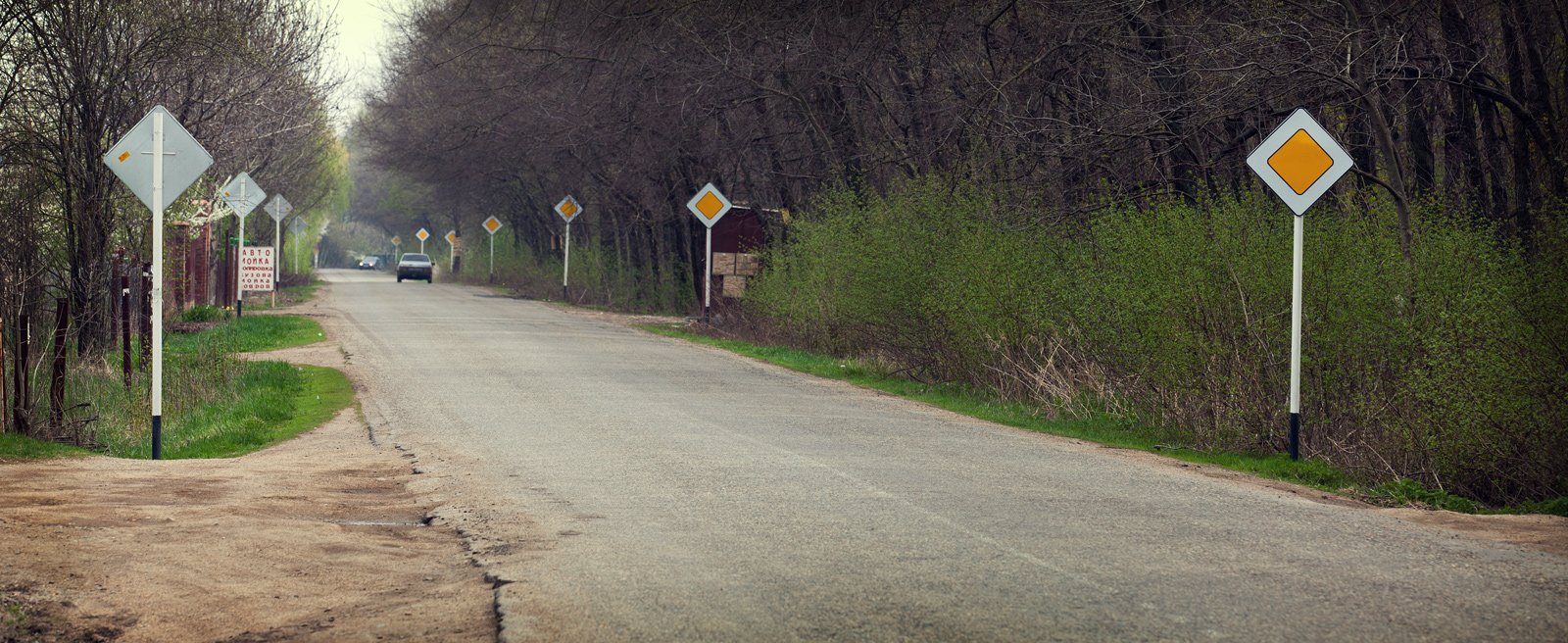
10. A parked car is a danger
Try to pass cars parked on the roadway at a distance. Moreover, this distance should not be less than the width open door. In this way, you will avoid damage to your own car or a possible collision with a person who accidentally fell out of the car.
In addition to maintaining an increased distance during snow or ice, you should also keep an eye on the vehicles behind you. After all, many drivers postpone the “change of shoes” of rubber at the latest possible date. An extra supply of free space in front can make it possible for a car behind you to stop without the risk of hitting your bumper.
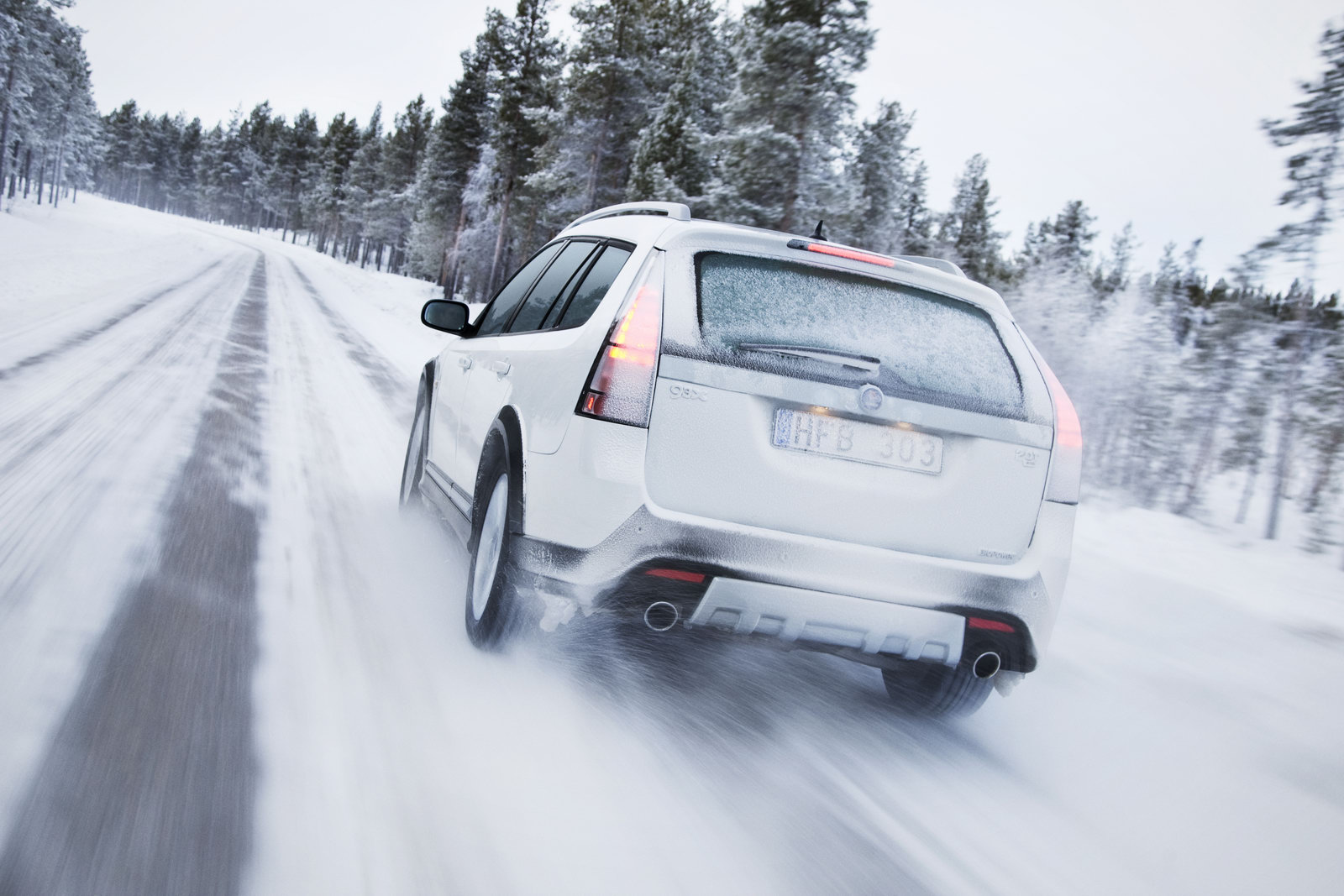
By the way, it is always better to look into the rear window when braking.
12. Garage
If your car most often "lives" in the garage, do not forget to fix the gate. Very often, a sudden strong gust of wind can severely damage your vehicle. Unfortunately, in my practice (and not only) such cases have happened.
13. Driving ethics
If you created an unpleasant situation for another driver while driving. Try to apologize to him all possible ways. This can be a hand gesture or turning on an emergency gang. Thus, you at least do not spoil the mood of another driver.
14. Communication with the traffic police
Always try to be friendly with traffic police officers. After all, their job is hard. In addition, friendly communication on your part will help to avoid a possible fine.
15. Turn signals
Try to develop in yourself the habit of turning on the appropriate turn indicator for any, even a minor change in the trajectory. This is vital and will show, first of all, your skill.
16. Alarm
I already wrote above about how to use the "emergency gang" in order to communicate with other drivers. But let's not forget its true purpose. If for any reason you are unable to continue driving, always turn on your hazard warning lights.
By the way, you can and should use the emergency gang in order to warn other road users about a dangerous situation on the road - they will reduce traffic, and you will help to avoid a major accident.
17. High beam
In addition to the emergency light signal, a high beam is used to “communicate” with other road users.
If you blinked briefly from behind, it means that you are asked to give way.
If you want to let someone pass, then briefly turning on the high beam, so to speak, in the face, will signal to the driver that you are allowing him to make a maneuver.
This is probably all, although there are much more unspoken rules of behavior behind the wheel. Let's feel free to share our experience in the comments, it will help to drive much safer!
- , 24 Dec 2014
In principle, this is an uninteresting topic. But the study of any discipline should begin with a consideration of general provisions: the concepts and principles on which this field of knowledge is based.
Therefore, let's be patient and study this rather dreary, but extremely necessary material. Moreover, we will constantly meet with his calculations.
To do this, consider two main questions:
- Basic principles of traffic rules
- Basic concepts used in traffic rules
In this article, we will consider the basic principles of traffic rules
Rules of the road are, for the most part, the regulation of specific traffic conditions.
That is, in the text of the Rules you can easily find a specific methodology for how to move, which lanes to occupy, how to maneuver, how to stop and park, in what sequence to pass intersections, etc.
Everything here is arranged on the shelves and has an internal logic (you will soon see for yourself).
However, section 1 of the Rules sets out the general (or fundamental) principles for the functioning of traffic rules. This is the basis of the legal framework for the road traffic system in the Russian Federation.
1.1. These Rules of the Road (hereinafter referred to as the Rules) establish a unified traffic procedure throughout the Russian Federation. Other regulations relating to road traffic must be based on the requirements of the Rules and not contradict them.
What can be said here? The rules of the road are a set of norms, or a set of rules that regulate traffic throughout our country, regardless of the national, religious or other affiliation of its participants.
Citizens of Russia, foreigners, stateless persons and other individuals driving on the roads of the country are subject to the Rules of the Road of the Russian Federation.
Traffic rules, therefore, have, as it were, the right of supremacy, which means that all other regulations adopted in the field of road traffic, should develop the provisions of the SDA, based on them and in no case contrary to their norms.
If you want a metaphor, if you please: SDA is the Constitution (basic law) of the state called "Road Traffic".
Of course, there is no such state - "Road Traffic". Although, why not? We all live in it.
And even if this country is more virtual than real, even if it is not recognized by the world community as a full participant in international relations, it exists. And in this country, unfortunately, people die or suffer every day and every hour. And this is already a reality. Bitter but real...
1.3. Road users are obliged to know and comply with the requirements of the Rules, traffic lights, signs and markings that apply to them, as well as follow the orders of traffic controllers acting within the rights granted to them and regulating traffic with established signals.
If traffic rules are the law, then, according to the Constitution of the Russian Federation, the implementation of the law is a duty.
Accordingly, performance traffic rules(including the requirements of signs, markings, traffic lights and traffic controllers) is the responsibility of all road users without exception.
1.5. Road users must act in such a way that they do not endanger traffic or cause harm.
It is forbidden to damage or pollute the road surface, remove, block, damage, arbitrarily install road signs, traffic lights and other technical means organizing traffic, leaving objects on the road that interfere with traffic. The person who created the interference is obliged to take all possible measures to eliminate it, and if this is not possible, then available means ensure that road users are informed of the danger and inform the police.
This paragraph of the Rules summarizes the obligations of all road users, calling them to harmonious interaction on the road. It is necessary to avoid the occurrence dangerous situations and causing harm. This is most often expressed in the obstruction of other road users.
And if the specified interference cannot be eliminated, the Rules require timely informing other participants about the danger and even reporting it to the police.
So, in the event of a malfunction vehicle when it stopped in the wrong place, the driver must turn on alarm and put up a warning triangle.
Agree, these actions are not needed for the driver; his goal is to fix the car. Such actions are a way of informing other road users about obstacles and dangers on the road.
But in the event of a serious accident, you will have to not only inform about the danger, but also call a police officer.
At the same time, paragraph 1.5 contains general prohibitions for road users. So, it is strictly forbidden to damage and pollute the road surface.
To be honest, there are often cases when a caterpillar tractor, moving from field to field (for example, as part of agricultural work), causes irreparable damage with its tracks asphalt pavement roads.
Or here's another example. Construction is underway (naturally, a mortgage house). Leaving the construction site freight car with lumps of earth and construction debris stuck to the wheels.
After the passage of such a truck, lumps of dirt remain on the roadway, which interfere with traffic. And in wet and rainy weather, this mud turns into a slurry that covers asphalt concrete over a large area.
The aesthetics of the car here is the tenth thing. A similar situation can play a cruel joke on drivers: in such a section, the grip of the wheels with the road will deteriorate, and it is quite possible to lose control of the vehicle. And here you are, an accident!
Another - quite specific - prohibition: the driver is forbidden to leave foreign objects on the road that can interfere with normal traffic.
Say irrelevant? Isn't it enough to "nest" along the roads of used tires, which are "carefully" thrown away by drivers, as a rule, of heavy vehicles?
And it’s good if these “foreign objects” are stored on the side of the road. Or maybe on the roadway...
Moreover, many drivers and passengers believe that small debris thrown out the window will not interfere with traffic.
How much naivete we have! Or carelessness ... Or cunning ...
The third ban, at first glance, is very funny. The rules categorically prohibit any illegal manipulations with the means of organizing and regulating traffic - signs, markings, traffic lights, etc.
In principle, it is difficult to imagine a case when someone tries to remove or install road sign, paint over or finish the road markings. By the way, a new trend is becoming more and more fashionable among European youth - to make signs creative with the help of special stickers. Rate it.
Funny and creative. But this is a violation of the Rules.
Or even "funnier" - swap (so, for fun) traffic lights. Here, drivers and pedestrians will be delighted ...
But, you must admit, in our conditions this prospect is unlikely so far. Although, who knows... The Russian mind, he's inquisitive... (at least the idea has been submitted).
1.6. Persons who violate the Rules are liable in accordance with applicable law.
The principles set out in paragraphs 1.1, 1.3 and 1.5, which we have just considered, embody the most General requirements which are presented by the Rules to road users.
A more detailed decoding of these very requirements awaits us ahead - when analyzing each section of the traffic rules. But the next paragraph - 1.6 - warns of legal liability for non-compliance with the requirements of the Rules of the Road.
In other words, road users for traffic violations can be (and should be!) Punished under the current Russian legislation. Did not want to follow the requirements of paragraphs 1.1, 1.3, 1.5, etc. - take responsibility.
Looking ahead, we note that administrative (most often), civil and (unfortunately!) Criminal liability is assumed for violation of traffic rules.
1.4. The roads have right-hand traffic.
Finally, the last and, according to many drivers, the main principle of traffic rules. The very principle with which we "live" on the road; with whom we walk side by side through life.
The principle of right-hand traffic means that all vehicles, without exception, must move exclusively along the road, closer to its right edge. And even if the traffic lanes marked with markings are not visible, the driver must keep to the right side of the road.
There are, of course, countries with left-hand traffic and, accordingly, the right-hand steering wheel in the car. For example, England (or its former colonies). We will not delve into the historical retrospective.
Just note that this is rather a tribute to tradition, because most modern states use right-hand traffic. And our country is no exception.
By the way, pedestrians, when they move along sidewalks or pedestrian crossings (“zebra crossings”), are also advised to stick to the right side.
Let's summarize. Section 1 of the Rules sets out fundamental principles the functioning of the road traffic system in the Russian Federation, related to its legal framework and the main obligations of road users.
This is the most general provisions characterizing the essence of that part of social relations, which is called "traffic".
If this information was useful to you, please write about it in the comments. If you have any questions, write, we will definitely try to help you.
- basic traffic rules
- basics of traffic rules
- basic rules of the road
- basic traffic rules briefly
TO Category:
Driving a car
Rules of the road - a code of laws for drivers
Every driver knows that driving on the roads and in all other places where the movement of vehicles is possible is carried out in accordance with the current Rules of the Road.
The main focus of the Rules is to ensure traffic safety and increase bandwidth roads. Excellent knowledge of the Rules, compliance with their requirements by all road users in itself guarantees safety and prevents traffic accidents.
Strictly guided by the Rules, each driver has the right to expect that other road users fulfill their requirements.
However, it should be borne in mind that many pedestrians do not know the Rules well, there are drivers (especially beginners) who do not yet have sufficient experience and skills, and others simply violate these Rules. In addition, there may be vehicles on the roads operational services, whose drivers are given the right to deviate from certain requirements of the Rules.
The driver must take these circumstances into account and, while driving, be constantly prepared for the fact that a person whose actions are contrary to the Rules may appear among road users at any time.
One of the main provisions in the Rules is that the right-hand traffic of vehicles is established in the USSR. The driver must always and everywhere strictly comply with this requirement and drive only on the right side of the road, regardless of the presence of other vehicles on it. Departure temporarily to the lane of oncoming traffic is allowed only on narrow roads when bypassing standing vehicles or when overtaking other vehicles if there is no oncoming traffic on this lane. Departure for left side roads are all the more unacceptable in an emergency.
Drivers sometimes make the worst mistake of driving to the left side of the road to avoid a head-on collision. After all, it happens. The driver of a car is moving along the right side of the road and suddenly sees that a dump truck is coming towards him on the same side. Forehead to forehead. This can happen if the dump truck driver is asleep, drunk, or just a bully. The driver of the car's nerves trembled, and in order to avoid a collision, he sharply takes to the left. But at the same moment, the driver of the dump truck jerks off to his side. Blow, and the car is broken. But since the collision occurred on the left side of the road, the driver of the car becomes the culprit of this incident. This is the price of non-compliance with the basic requirement of the Rules of the Road. But the driver of a passenger car could have avoided a collision with a dump truck if he had slowed down and directed his car to the right side of the road, maybe even off the road. And if the collision did occur, then it would occur on the right side of the road and the driver of the dump truck would certainly become its culprit.
Drivers should also pay attention to the concept of “give way”. In cases where drivers of other vehicles have priority, it is not necessary to stop and wait until the one who has the priority right has passed. Yielding means not forcing the other driver to stop or change direction. Sometimes it is enough just to slow down or change lanes, for example, to allow special vehicles with a flashing beacon turned on or a special sound signal. It all depends on the specific situation. The main thing is not to interfere with these vehicles to continue moving freely.
All means of organizing and regulating traffic can be conditionally placed in the following hierarchical sequence: road markings- road signs - temporary road signs - traffic lights - traffic controllers.
The main figure in the organization and regulation of traffic is the traffic controller. It can give signals that contradict traffic signals, it can direct vehicles contrary to road signs, markings and, in general, the Rules of the Road. His instructions are binding on all drivers and must be followed immediately. In addition to the signals established by the Rules, the traffic controller may use others that are understandable to drivers (some of them are shown in Fig. 1).
A shallow knowledge of road signs often leads novice drivers to curiosities when they, unknowingly, become violators of the Rules. Their misunderstanding arises mainly due to ignorance of a number of deviations from the requirements of road signs that the Rules provide for vehicles. common use. So, following the bus in an unfamiliar area, a novice driver can blindly copy the actions of the bus driver, guided by the considerations that if the bus is allowed to pass here, then it can pass.
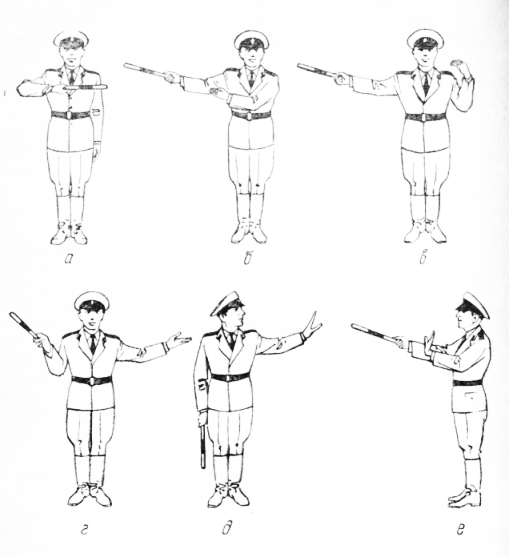
Rice. 1. Additional signals given by the traffic controller: a - speed up the movement; b - quickly turn left; c - drive behind your back and faster; d - quickly turn right; d - stop; e - wait turn
Even more misleading may be introduced by drivers of individual cars who live or work in areas marked with signs “Movement is prohibited” and “No movement of motor vehicles”, as well as drivers of vehicles that serve businesses located in these areas.
Finally, cars and motorized wheelchairs driven by disabled drivers can pass under the signs “Movement is prohibited” and “Movement of motor vehicles is prohibited”, as well as stand in the zone of signs prohibiting parking and stop in the zone of prohibition of stopping.
Driving a car in built-up areas has a number of features. The rules do not divide settlements into large and small. The requirements of the Rules are the same both for a village, where there are only 20-30 households, and for a city with a million inhabitants. But driving a car major city much more difficult than in the village.
When driving along city streets with high intensity, the heart rate of drivers increases by 25-50%. Experience shows that even drivers with great experience, who arrived, for example, in Moscow from a city with a population of 100 thousand people, commit many violations of the Rules in the first days.
In large settlements, the vast majority of traffic accidents occur. The greatest danger in the settlement is created by traffic with high speed, haste and nervousness in the actions of drivers. Meanwhile, it has long been proven that in urban conditions, movement at high speed does not, as a rule, give a gain in time. The seconds saved due to speed and large nervous tension, are quickly lost at regulated intersections.
The rules define a number of differences between driving in built-up areas and on country roads. Most of the differences are caused by the lower speed limit, established by the Rules for settlements. So, road signs (mainly warning, priority and some others) in settlements are installed at a distance from the beginning of a dangerous section or intersection, much less than at country roads Oh.
In settlements, under certain conditions, it is allowed to stop and park vehicles on the left side of the road; this cannot be done on country roads.
The sign "Beginning of the settlement" on a white background requires drivers to drive through this settlement at a speed of up to 60 km / h. But it happens that a few tens of meters before such a sign, a sign “Restriction top speed» - 40. Does this mean that it is necessary to move through this settlement at a speed of 40 km / h? No, it doesn't. It is valid only up to the sign "Beginning of the settlement", and after it the speed limit is 60 km/h.
Another thing is when the sign "Maximum speed limit" is installed in the direction of travel behind the sign "Beginning of the settlement." Then its coverage extends to the nearest intersection or to the end of the settlement.
The same applies to the sign "End of the zone of all restrictions", when it is installed in the direction of travel in front of the sign on a white background "Beginning of the settlement". Drivers often understand this situation in such a way that there are no restrictions on traffic in a given settlement and the speed of movement can be developed as on country roads, you can give signals, etc. This is a mistake. Here, the action of the sign that cancels all restrictions also ends at the beginning of the settlement.
It is known that the sign "Beginning of the settlement" on a blue background does not limit the speed limit set for country roads. But as soon as the driver turns into any side street of this settlement, the requirement of the Rules on the speed limit for the settlement - 60 km / h immediately comes into force.
In conclusion, it should be noted that all the requirements of the Rules related to the peculiarities of traffic in settlements come into force only after the road sign "Beginning of a settlement", and not when passing its name, indicated in another way (for example, a banner, a colorful panel).
A few tips for meeting the requirements of two more road signs.
The sign "Wild Animals" warns of the possibility of wild animals on the road. Many drivers, as a rule, do not react to it. But in vain. A collision with a large animal (elk, deer) or an attempt to deviate from a collision with it at high speed often leads to a run off the road, a rollover and very serious consequences. A lot of accidents with a fatal outcome for passengers and drivers have already been registered. So this sign, especially in places where there are hidden approaches to the road (in the forest, in the bush), cannot be neglected.
The Crosswind sign requires you to be prepared for a sharp deviation of the car from rectilinear motion, for example, when leaving for an open area due to some kind of shelter (due to a building, a fence, from a forest). The force of the side wind can reach hundreds of kilograms. Such a force can deflect the vehicle from a straight line and frighten the driver. On slippery roads, it can blow the car off the road. You need to be ready for this, and by turning the steering wheel in the direction opposite to the demolition, straighten the car. In order not to be taken by surprise when passing this sign, it is recommended to slow down (especially on slippery roads), avoid coasting and keep the steering wheel with both hands.
To organize safe traffic and improve the efficiency of the use of vehicles, the State Automobile Inspectorate (GAI) has been established in our country. It develops relevant regulations, including the Rules of the Road, and monitors their observance.
The GAI division - the road patrol service has the task of maintaining order on the roads. She carries out work to prevent deviations from the Rules of the Road, draws up materials traffic accidents, searches for persons who have committed an accident, provides first aid to the victims, and eliminates the consequences of accidents. With the inspectors of this service, who by their position are representatives of the authorities, usually all road users have contacts. The inspector's orders regarding the traffic order must be strictly followed by all drivers and pedestrians.
The main activity of traffic police officers is educational and preventive work, the prevention of traffic accidents. But in such a complex mechanism as road traffic, of course, one cannot do without the legal responsibility of drivers: administrative, criminal and civil.
The form of administrative responsibility is determined officials traffic police; bringing drivers to criminal and civil liability is carried out by a court decision, which bases its verdict on the materials of the State traffic inspectorate.
TO Category: - Driving
Do you know when you can overtake on the freeway? Who should yield to whom at a roundabout? Can cyclists use the right of pedestrians, and are drivers obliged to give way to those who? Do you think novice drivers ask these kinds of questions? In fact, even drivers with 20 or even 30 years of experience have such questions. Yes, of course, experienced drivers know most of the rules of the road. But, nevertheless, some are forgotten over time. Especially such rules of the road, which are difficult to interpret. Today we decided to collect the most important rules traffic, which are often forgotten by many drivers.
Do I have to yield to a cyclist at a pedestrian crossing?
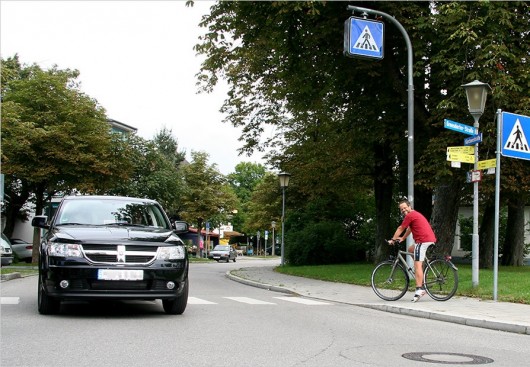
Many mistakenly believe that we should always give way to cyclists. But according to the current rules of the road, in fact, not everything is so simple. The point is that the answer is actually yes and no.
According to the traffic rules, a cyclist is a bicycle driver.
A bicycle is a vehicle ().
Accordingly, according to the law, a cyclist is not a pedestrian if he is cycling on the road. This means that the cyclist is obliged, like car drivers, to follow the usual rules of intersection priority. Also, the driver must obey the signals of special bicycle traffic lights (), and in their absence, the signals of ordinary transport traffic lights (not pedestrian).
In addition, according to the current traffic rules, on adjustable pedestrian crossings cyclists must comply with the instructions of the signals of bicycle or general transport traffic lights, as well as traffic controllers ().
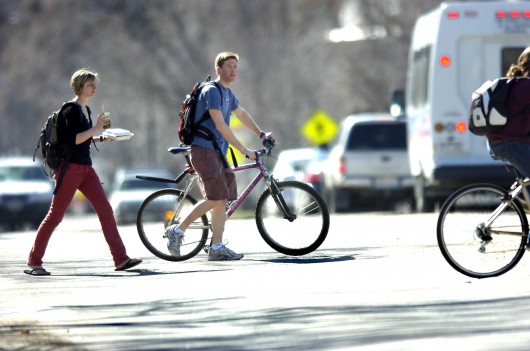
Including bike driver ( cyclist) at a pedestrian crossing must get off the bike and cross the road, together.
Summing up, we want to note that, despite the fact that car drivers are not required to yield to cyclists in traffic, crossing carriageway at a pedestrian crossing, this does not mean that we should not give way to them, even if cyclists violate traffic rules. The fact is that the cyclist is less protected on the road from danger.
Remember that a car is an increased source of danger, which can be a threat to life not only for pedestrians, but also a source of increased danger for cyclists. So be careful at unregulated pedestrian crossings, where cyclists can often jump out, violating traffic rules. In this case, it is better to give in, even though the law is on your side.
Do I have to give way to vehicles on the side of the road?
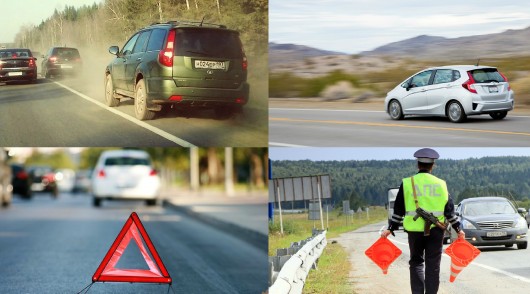
The fact is that on September 4, 2015, the Supreme Court of the Russian Federation issued a resolution No. 46-AD 15-29, in which it clearly established the concept that a driver moving along the side of the road does not have priority right of way even if other drivers in relation to him have an interference on the right.
Recall that earlier, if drivers moving in the main lane of the road did not give way to cars leaving the side of the road, then this was considered by the traffic police as a violation of traffic rules and drivers who did not give way were held accountable.
Fortunately, one of the drivers found guilty of not giving the right of way to a car that was moving along the side of the road managed to defend his rights in the Supreme Court of the Russian Federation.
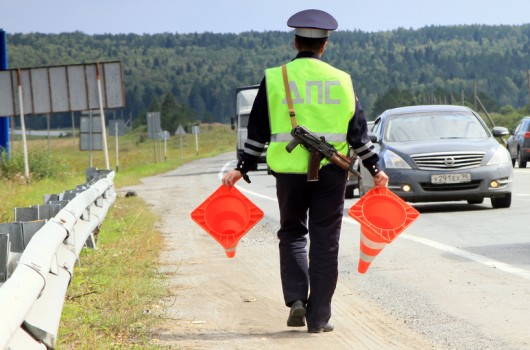
From now on, the Armed Forces of the Russian Federation explained that drivers have the right not to give way to cars moving along the side of the road, since the drivers of such cars grossly violate the current traffic rules, which means they cannot have a preferential right of way due to violation of current legislation.
So, according to the rules of the road and, drivers may not give way to the road to all cars that drive along the side of the road.
We remind you that the fine for driving on the side of the road is 1,500 rubles ( article 12.15 part 1 of the Code of Administrative Offenses of the Russian Federation)
Is it possible to move in the middle lane if the right lane is free?
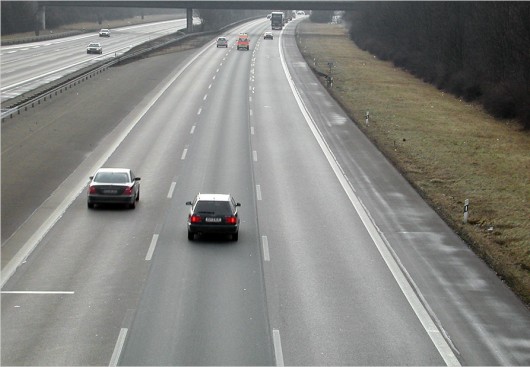
Many drivers, despite good knowledge of the rules of the road, it is often forgotten (including by many experienced drivers) that, according to the paragraph outside built-up areas, as well as in built-up areas on roads marked with a sign or or where driving at a speed of more than 80 km/h is allowed, drivers of vehicles vehicles should lead them as close as possible to the right edge of the carriageway.
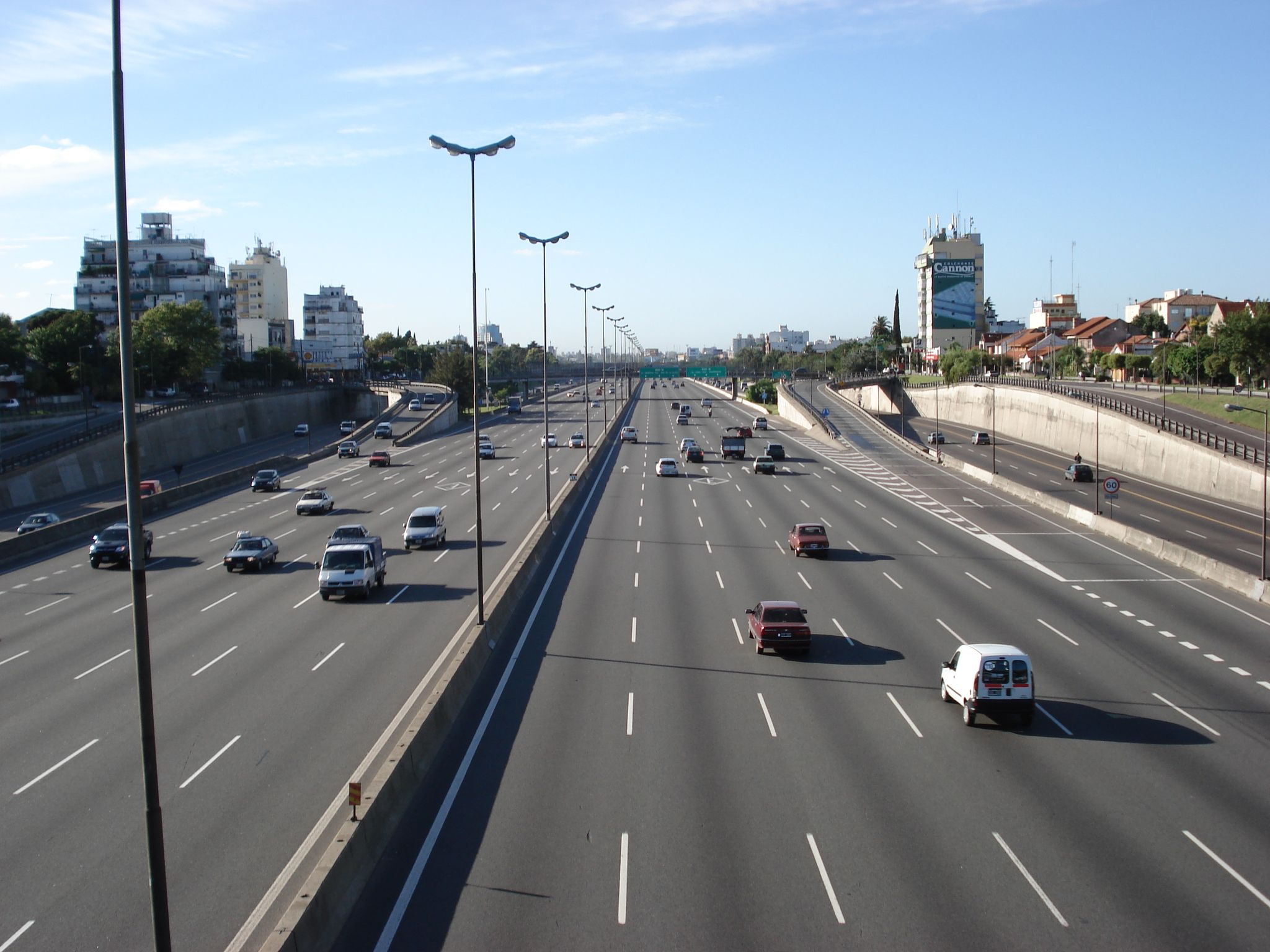 That is, if, when driving along the highway outside settlements, the driver moves on the left or middle lane, with free right lanes, then it violates current rules road traffic. By the way, candidates for drivers often experience difficulties with these rules during the theoretical exam at the traffic police. The exam comes across a tricky question from
, to which many drivers answer incorrectly. .
That is, if, when driving along the highway outside settlements, the driver moves on the left or middle lane, with free right lanes, then it violates current rules road traffic. By the way, candidates for drivers often experience difficulties with these rules during the theoretical exam at the traffic police. The exam comes across a tricky question from
, to which many drivers answer incorrectly. .
That is, the answer to this question is that the movement of a car with free right should be carried out only in the extreme right lane.
In other words, many mistakenly believe or eventually forget that with free right lanes, the driver must change lanes not only from the left express lane, but also from other lanes, if the lane on the right is free.
If you violate this rule, then according to the current legislation, the driver may be held liable. under article 12.15 of part 1 of the Code of Administrative Offenses of the Russian Federation:
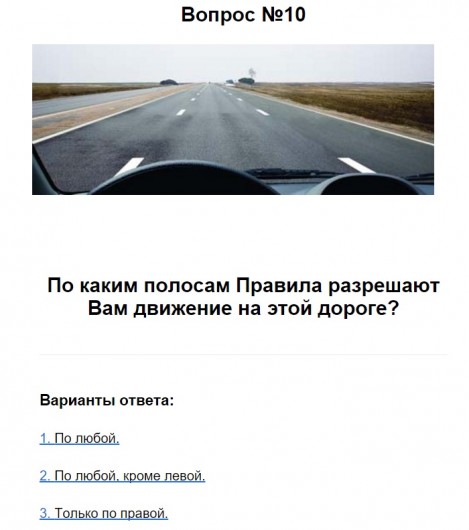
"Violation of the rules for the location of the vehicle on the carriageway of the road, oncoming passing or overtaking without leaving the side of the carriageway of the road intended for oncoming traffic, as well as driving along the sides or crossing an organized transport or foot column or taking a place in it ".
Fine: 1,500 rubles.
When can you overtake on the right?
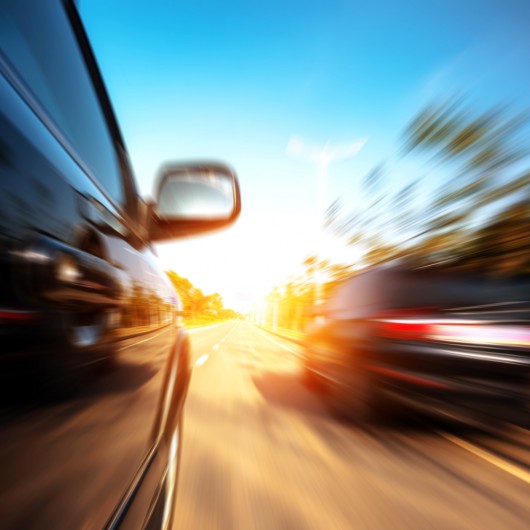
Every driver knows that overtaking on the right is formally prohibited in the current ones. Although the SDA does not explicitly say so. That is why many drivers believe that since right overtaking on the right is not prohibited, then it is allowed. The fact is that according to the current rules of the road, the concept of overtaking does not exist. There is a rule that speaks of being ahead of another vehicle.
In fact, this is overtaking. Moreover, the lead, about which in question in traffic rules, . Since in our country there is left-hand traffic, this means that in fact there is no concept of overtaking on the right in the rules of the road. In fact, this suggests that the traffic rules in Russia do not provide for rules describing the lead maneuver on the right.
We also want to note that there are two types of advance cars.
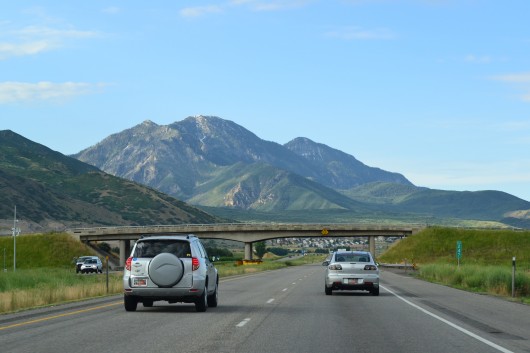
For example, there is an advance of a vehicle without a lane change (this is when a car is ahead of another due to its higher speed).
There is a lead with exit to another lane (in the case of driving on the left lane, the lead providing for overtaking is carried out with the exit to the oncoming lane, in the case of driving in the middle lane, lead (overtaking) is carried out on the left lane).
Please note that in, since there is no such prohibition in the traffic rules. There is also no separate article in Administrative Code RF, which would provide for responsibility for overtaking the vehicle on the right. Why did the legislator not provide for liability for this dangerous violation?
After all, overtaking on the right often causes serious accidents.
The fact is that in the current traffic rules there are a number of other indirect traffic rules that actually do not provide the possibility of overtaking on the right, with the exception of interchanges and left turns of the vehicle on the left.
For example, if you are moving in the right lane and want to overtake on the right, then you will be forced to, which is prohibited by traffic rules. If you are driving in the middle lane and want to overtake the car on the right, then you have the right to move in the right lane at a speed not exceeding the speed of the car in the middle lane. So, overtaking on the right, you will actually violate the other traffic rules. That is why the legislator did not provide for separate liability for overtaking on the right.
So in no case do not overtake on the right, as this is the most dangerous maneuver on the road that can lead to an accident. Here is an example:
What does the stop sign actually mean?
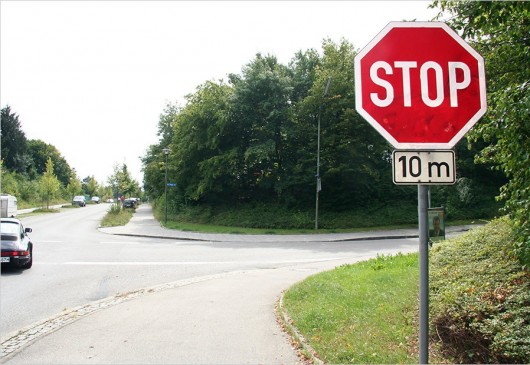
Road sign " Stop". It is forbidden to move without stopping in front of the stop line, and if there is none, before the edge of the intersected carriageway. The driver must give way to vehicles moving along the intersected, and if there is a sign, along the main road.
It can be installed before a railway crossing or a quarantine post. In these cases, the driver must stop in front of the stop line, and in its absence, in front of the sign.
According to the rules of the road, if the driver saw the sign " Stop", then if there is no marking (stop line), he must stop before the sign or on the same line with the sign. Otherwise, having crossed the sign, it will be considered traffic violation. This entails responsibility for article 12.12 part 2, which provides for a fine of 800 rubles.
Can you turn on a red light?
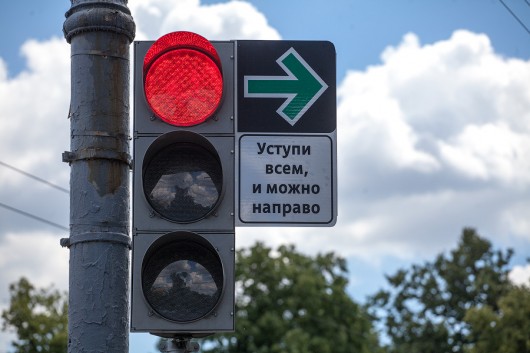
According to the traffic rules, all drivers know that driving on a prohibitory signal is prohibited. But recently, a new rule of traffic rules has appeared in Russia, which allows driving on red if there is a special sign next to the traffic light with a green arrow to the right. This new road sign actually allows traffic at a red traffic light, but only after the driver has given way to all road users who are obstructing traffic.
Please note that turning on a red light is only allowed if there is a "green arrow to the right" sign, which cancels the prohibition of driving on a red traffic light. Remember that if you turn on a red traffic light, which does not have a special arrow sign, then you violate traffic rules, for which liability is provided part 1 and part 3 of article 12.12 of the Code of Administrative Offenses of the Russian Federation.
The third part provides for punishment in the form of a fine of 5,000 rubles or deprivation of a driver's license for a period of 4 to 6 months (applied for a repeated violation within 12 months from the date of the last offense).
Who must give way in a roundabout?

Many novice and even experienced drivers often forget the rules for driving through a roundabout marked with a sign.
According to the current traffic rules, if a sign is installed at a roundabout (sign " Circular motion ”) together with signs (sign " Give Way") or (sign "Stop"), the driver driving in a circle enjoys the right of way.
That is, in principle, the meaning of travel is simple. If there are, the above signs are before, then those who move in a circle should not yield to those who enter the roundabout.
Please note that if there are no traffic signs in front of the circle " Give Way" or " Stop" and in the presence of the sign " Circular motion", drivers who move in a circle are obliged to give way to those cars that enter the roundabout.
If you do not give the right of way at the intersection, you may be held liable. under part 3 of article 12.13 of the Code of Administrative Offenses. In this case, waiting for you administrative punishment in the form of a fine of 1000 rubles.
Is it allowed to drive on a yellow traffic light?
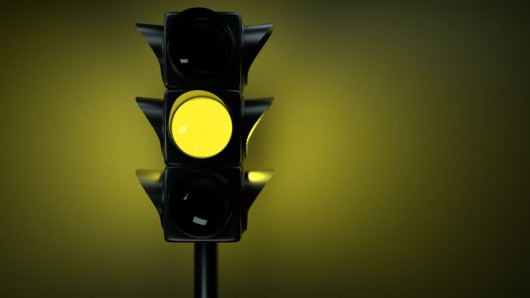
If you ask many drivers if the traffic rules allow the passage of certain sections of the road at a yellow traffic light, then some drivers will answer that of course it is impossible, since this is directly prohibited by the clause. The other part of the drivers may answer that driving on a yellow traffic light is allowed, since this is allowed by the paragraph.
Which of them is right? Unfortunately, not many people clearly remember these norms of the rules of the road, and cannot explain in detail in which cases it is possible not to stop at a yellow traffic light.
![]() Yes, indeed, according to the current legislation, drivers are allowed to drive on a prohibitory traffic signal ( yellow traffic light is a prohibition signal). The fact is that the clause expressly states that the movement of a vehicle at a prohibitory traffic light is allowed in accordance with clause.
Yes, indeed, according to the current legislation, drivers are allowed to drive on a prohibitory traffic signal ( yellow traffic light is a prohibition signal). The fact is that the clause expressly states that the movement of a vehicle at a prohibitory traffic light is allowed in accordance with clause.
The paragraph allows movement on a yellow traffic light only if the driver of the car cannot stop without resorting to emergency braking.
So if you are moving to a yellow light and your speed allows you to stop before a traffic light without applying emergency braking, then you must stop, otherwise the clause will be violated, which will entail liability under article 12.13 of the Code of Administrative Offenses of the Russian Federation, which provides for liability in the form a fine of 1000 rubles.
Can you drive barefoot?
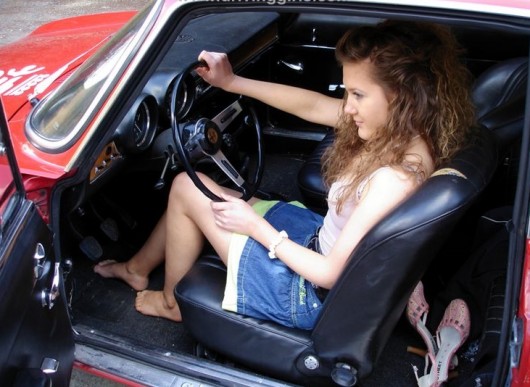
Driving without shoes, or with shoes on high heels may cause your foot to slip off the pedal, resulting in an accident. Therefore, we do not advise drivers to drive a car without shoes or in shoes with high heels. It is worth noting that in current rules traffic there is no direct ban on no shoes or shoes with high heels.
But this does not mean that you should neglect your safety and the safety of passengers and other road users. By the way, in many countries (for example, in Germany) in the rules of the road there is a direct ban on driving without shoes. We repeat, there is no such prohibition in our traffic rules.
If I damaged someone else's car and left, but the next day I reported it to the traffic police - is there any responsibility?
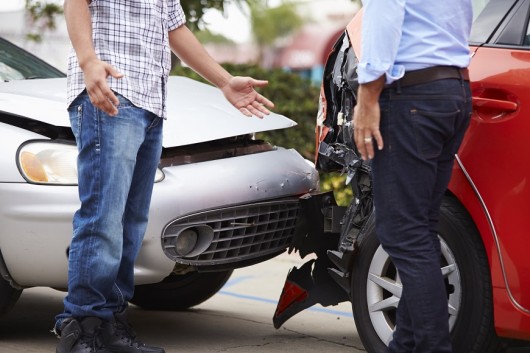
According to current legislation, in the event that you cannot identify the owner or driver of the injured party, you are required to report the traffic accident to the traffic police or the police. In this case, you must not leave the scene of the accident, because if you leave the scene, you will be subject to part 2 of article 12.27 of the Code of Administrative Offenses of the Russian Federation, which provides for deprivation of rights for a period of 1 to 1.5 years or arrest for up to 15 days.
So even if you're leaving with accident scene, subsequently reported this to the State traffic inspectorate, you will still be held accountable (based on a court decision) for leaving the scene of the accident. Remember that even if you slightly damaged another car and fled the scene of an accident, you are still violating applicable law.
Should I give way to the tram?
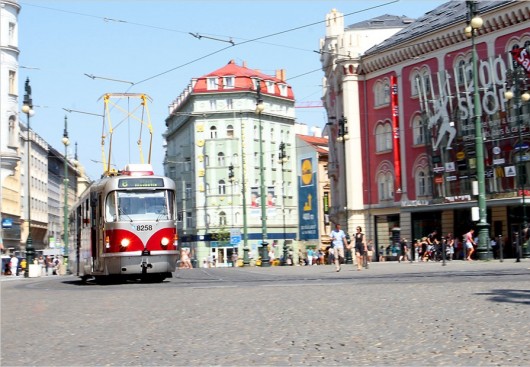
After learning the rules of the road, many novice drivers think that the tram always has the right of way. But it's not. Many drivers forget that traffic rules in some cases oblige tram drivers to give way to other vehicles.
For example, if a tram driver leaves the Depot onto the road, then you are not required to give way to the tram, since the tram must give way.
Also, if the tram is on a secondary road, and you are moving along the main one, then you are also not required to give way to the tram.
Including the tram driver is obliged to give way if he is moving at a regulated intersection at the moment when the arrow is on at the traffic light simultaneously with the red or yellow signal on the additional section of the traffic light, and other cars are moving to the usual green traffic light. In this case, the tram must first pass those who are moving on the green signal, and then continue moving.





